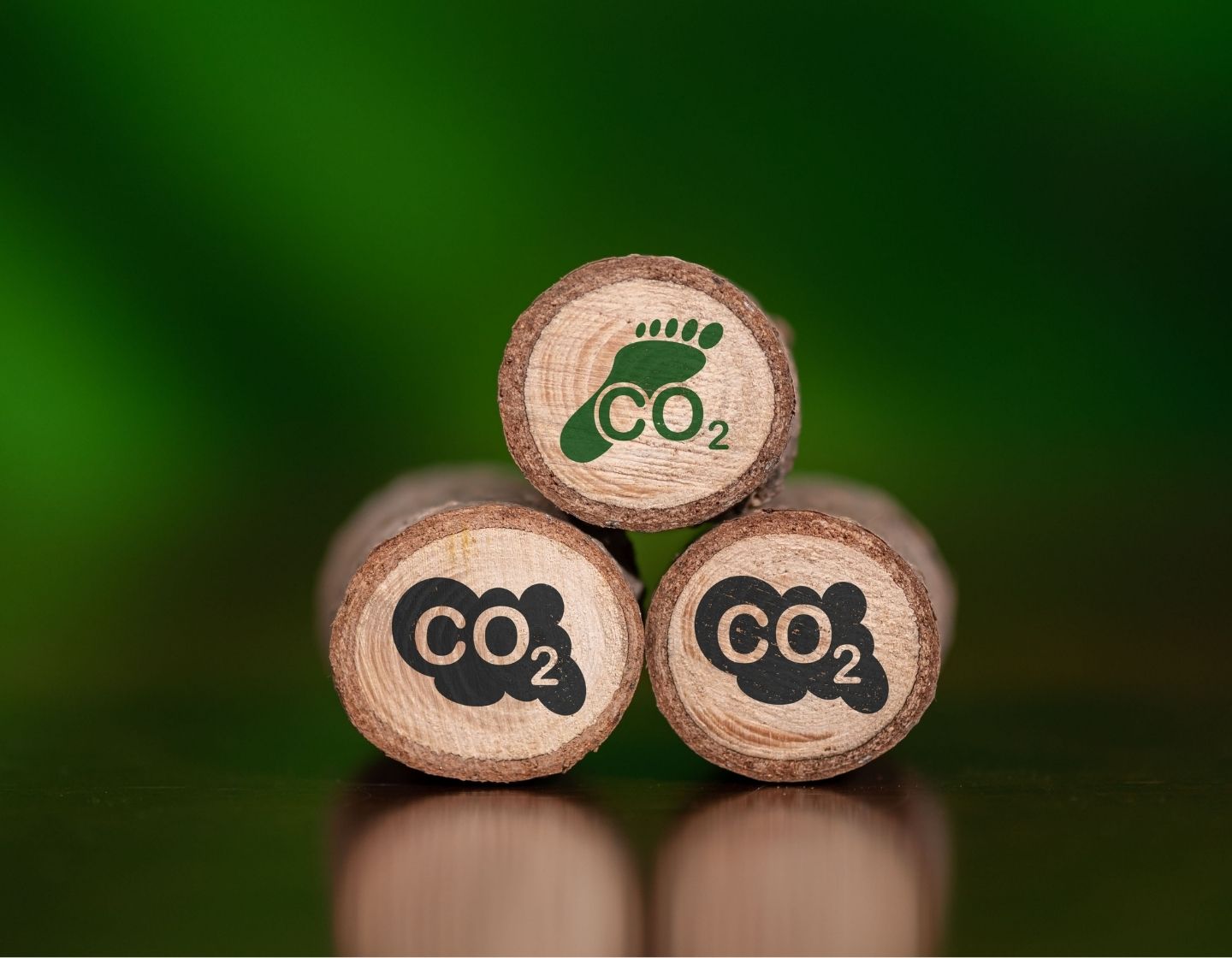What’s carbon – and is it all bad?
Carbon is an essential element for life on Earth and Its compounds form solids, liquids and gases, helping to form the bodies of living organisms.
It’s the basic building block for life and 18% of your body is composed of carbon. Fossil fuels are largely composed of hydrocarbons, and these are released as greenhouse gases like carbon dioxide (CO2) when used.
So while we are all carbon is some form it’s a particular combination that is the focus of global reduction strategies. We use the term “carbon” when discussing climate change as a catch-all for carbon dioxide, one of the main greenhouse gases (GHGs) – and we need to reduce GHG levels in the atmosphere to prevent the world from overheating.
The amount of carbon doesn’t change and is actually no more nor less than when the dinosaurs were living millions of years ago. It’s stored rocks and sediments, in the atmosphere and oceans, and in living organisms.
We release carbon back into to the atmosphere when we breathe, as do plants, in what’s called the carbon cycle, and burning materials such as wood, oil and gas is also a part of this process.

Crucial element in life
Carbon is a crucial element in life because its chemical structure has four bonding sites that enable construction of long, complex chains of molecules. And as carbon bonds can be formed and broken with minimum amount of energy, this facilitates the dynamic organic chemistry in our cells.
Carbon is classed as either organic or inorganic with a cyclical two-way flow of carbon between the organic and inorganic forms. Organic carbon is found in living or dead organisms, fossil fuels, small deposits in rock, in water and in the atmosphere. Most inorganic carbon exists as carbon dioxide (CO2), carbonate and hydrogen carbonate.
CO2 is a greenhouse gas that traps heat close to Earth, which is essential for life as this helps hold the energy from the Sun, preventing it from dispersing back into space. Without CO2, the Earth would be frozen wasteland.
So this conservation effect from CO2 and the other GHGs are beneficial but there’s a delicate balance to be maintained as just a small increase in these gases can cause excessive heat retention with disastrous consequences.

Releasing greenhouse gases
Burning carbon-based fuels like coal, oil and gas releases huge quantities of GHGs and the carbon cycle is disrupted as photosynthesis and the oceans can’t keep up, the Earth gets warmer and the global climate starts to change rapidly. With no action to reduce GHGs, life on Earth faces catastrophic disruption within the next 100 years.
Burning fossil fuels produces three main effects: heat, water, and CO2, with some solid forms of carbon, like soot and grease. All the carbon stored for hundreds of millions of years in the fossil fuels is being released back into the atmosphere in just a few hundred years.
The concentration of CO2 in the atmosphere is nearly 412 parts per million (ppm) and rising. This is a 47% increase since the beginning of the Industrial Age, when the concentration was around 280 ppm, and an 11% increase since 2000, when it was around 370 ppm.
There are also geological sources of CO2 in the atmosphere like volcanoes, gases escaping from the Earth’s mantle and erosion of rocks containing carbon, such as limestone.
Carbon dioxide is crucial
Our climate crisis shorthand targets carbon as the big baddie. We just need to reduce carbon emissions and shrink everyone’s carbon footprint to beat the carbon menace. But as we’ve seen, the carbon element is not our enemy.
Carbon dioxide is crucial in photosynthesis, which is a source of Earth’s capacity for regeneration. Soil carbon guarantees healthy ecosystems, along with food and water security. Wool, cotton and silk are carbon compounds, as are many industrial polymers and super-carbons such as diamonds and graphene.
In a sense, we have made carbon a toxic element. We’re causing climate change through poor life design that is disrupting the complex carbon cycle. We’re putting GHGs into the atmosphere at a scale and speed which ensure that carbon is in the wrong place, for too long and at disruptive levels.
Reducing the amount of GHGs being released is the focus for governments across the globe, with commitments to limit global heating to a less damaging level of 1.5 degrees C (2.7 degrees F) above levels measured in the mid-19th century. Currently, the speed of warming continues to accelerate.

Carbon Capture and Storage
The Intergovernmental Panel on Climate Change (IPCC) underlines that to achieve the ambitions of the Paris Agreement and limit future temperature increases to 1.5°C we must deploy technologies to remove carbon from the atmosphere.
Along with actions to reduce the production of GHGs, there are renewed efforts to roll out effective carbon capture and storage (CCS) methods. CCS is the capture of CO2 emissions from steel and cement production, and other industrial processes like burning fossil fuels in power generation.
The captured carbon is transported and stored deep underground in geological formations.
CCS has a three-step process:
- The CO2 is separated from other gases.
- It is then compressed and transported by pipelines, road or ship.
- It is injected into rock formations deep underground for permanent storage.
Storage sites include saline aquifers or depleted oil and gas reservoirs that are at least 0.62 miles (1km) underground.
The proposed Zero Carbon Humber project in the UK will have a saline aquifer in the southern North Sea, around 90km offshore. Named “Endurance”, it is roughly 1 mile (1.6km) below the seabed and has the potential to store very large amounts – more than 6 million tonnes of CO2 a year continuously for 25 years.
There is also work on developing Carbon Capture Utilisation/Usage and Storage (CCUS). The aim is to create technology that can enable re-use of CO2 in industrial processes by converting it into plastics, concrete or biofuel, for example.
Melbourne-based think tank Global CCS Institute advises that the planned global capacity for CCS projects grew by 50% in just nine months in 2021, while the Clean Air Task Force’s Europe carbon capture project and activity map mapped over 40 carbon capture projects announced in 13 different European countries. The planned projects globally forecast the capture of 111 million tonnes of CO2 annually.
Nature-based solutions
There is increasing attention on nature-based solutions to climate change. These solutions focus on conserving, restoring, or improving management of ecosystems to remove CO2 from the atmosphere.
These ecosystems help to slow climate change by capturing CO2 and sequestering it in plants, soils, and sediments. Examples include allowing forests to regrow, restoring coastal wetlands like mangroves, as well as peatlands, and switching to restorative agricultural practices that build soil carbon, like “no-till” agriculture and cover crop rotation, which support healthy soils.
Advocates of nature-based solutions point to the fact that they also provide a broad range of other benefits, including as cleaner air and water, economic benefits, and increased biodiversity. While conserving existing wetlands serves primarily to prevent GHGs, restorative agriculture and regrowing clear-cut forests, actively remove CO2 from the atmosphere and store it safely.
Carbon is crucial for soil health. Plants convert CO2 into “liquid carbon”, carbon-based sugars which flow to shoots, leaves and flowers, and also nourish the soil food web, flowing from plant roots out into the communities of soil microbes. These microbes share minerals and micronutrients essential to plants’ health. Micronutrients increase the rate of photosynthesis, fuelling new growth, yielding more liquid carbon for microbes and micronutrients for fungi and plants.
Liquid carbon moves through the food web below ground, where it is transformed into rich and stable soil carbon, which also gives soil a sponge-like structure, improving fertility as well as water retention and filtering.

Oceanic carbon removal
Ocean-based practices include restoring seagrass meadows or growing kelp or shellfish to restore or expand marine ecosystems. Another aquatic carbon removal technique is to add alkaline materials to seawater that enhance the ocean’s natural carbon sink.
Effective minerals include natural olivine, or artificial substances like lime CO2 is removed from the atmosphere through a series of reactions which convert dissolved CO2 into stable bicarbonate and carbonate molecules, and this causes the ocean to absorb more CO2 from the air to restore equilibrium.
So, while carbon is not the big killer that it is often mistaken for, the way we handle it needs to change. Reducing our carbon footprint individually will make small advances that when added together can make a world of difference.

